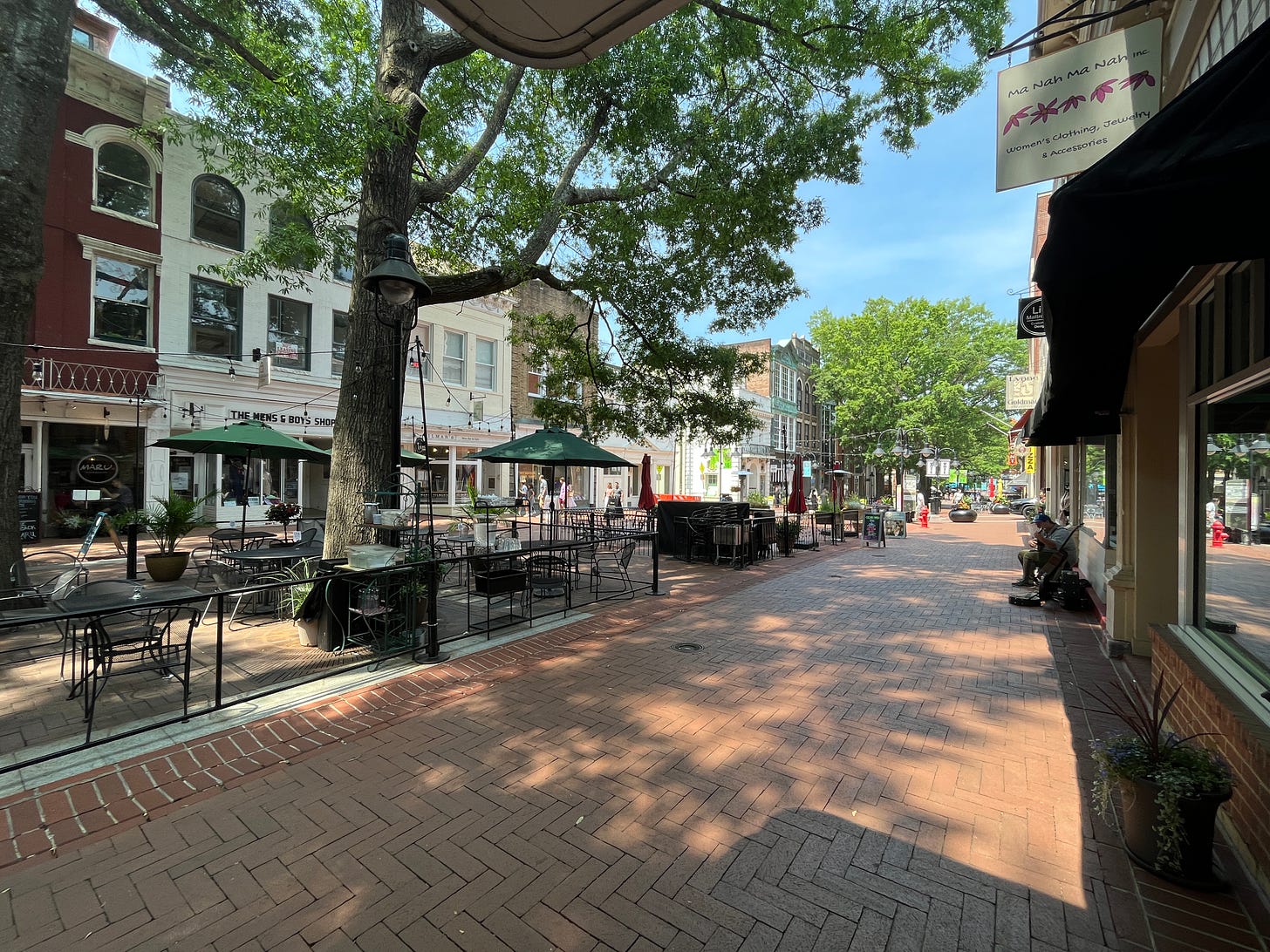Editor's note: A version of this article originally appeared on the Substack Density Dad and is republished with permission.

I just had an eventful weekend to say the least, as my family and I frolicked around The Fan & Museum District of Richmond, Virginia on the search for a thrifted Panama hat, fully embracing the dad life. We also made a quick day trip to Charlottesville, Virginia, and had a great time for the few hours we were there, but the trip reminded me of some pretty consistent issues I notice when we’re out with our daughter.

Here are five issues families with young children face on a day-to-day basis that can be solved with intentionality and creativity.
Shade
While green space is certainly needed in our cities, so is shade — and the two don't always go together. We do our best to keep sunscreen on hand for our daughter, but we should be able to find cover to recoup during play. Below is a brand new park in Greenville, S.C. and there’s simply no shade. No awnings, art sculptures, or shade sails. Sure, there are trees, but they need time to grow. There’s not even a pergola. This is a place built primarily for families, and somehow this fine detail in humid South Carolina was missed.

Public Restrooms
Changing your child in the car is rough. Having our sons “find a tree” or use a cup is even worse. While parents have to do what we have to do at times, it’s a clear sign that children again are left out of the built environment. I’ve personally witnessed a time or two when the public restroom in a park was closed.
Cities are so afraid of our housing insecure that we’ve simply made it inhumane to use the bathroom. Children can’t wait — and sometimes, neither can adults.
Pedestrianized Streets
My little one can walk now and loves to get out and show the world. As a proud father, I want nothing more than to see her show off this privilege — preferably right before nap time. She’s gotten to the point that she doesn’t want to be held when she sees everyone else strutting down the sidewalk. However, there are simply not enough places where she can do so. Our streets are now prioritized for cars, and reversing this would send many into a frenzy.
I did see this great pedestrian mall in Charlottesville, but even they allowed cars to cut across it at certain intersections.

Small Concept Drug Stores/Bodegas
I’ve been an advocate for micro-retail storefronts since my days as a brick-and-mortar business owner. I believe with the rising costs of commercial rents and the shift in the way we shop online, lowering the necessary square footage of a space would place ease pressure on a business to fill it with inventory.
As a parent, there’s nothing like needing to buy something simple in a residential area that you’ve forgotten at home or ran out of and the nearest convenience store is miles away. Whether it's sunscreen, a bottle of water, or snacks, when we make neighborhood corner stores illegal to build, we make for shortened family time out and about in order to calm an unhappy child. My wife and I ran into a Dollar General Express in Wilmington, North Carolina, and ever since, the idea of micro convenience stores seems like an easy solution in dense, residential areas for this very problem.

Spacious Public Transit
The last one is near and dear to me as a car-free father and bus rider. There is no space on the bus for a stroller. There has to be a way to rethink how our buses are configured to consider families who rely on bus service. Fewer seats could add space, but rotating a few seats along the sides of the bus could also open things up. We do this with light rail and heavy rail; why not do it for buses, too?
I’ll also include family-friendly ridesharing. Currently, there’s no way to request a rideshare with a child car seat. There are times I’d love to request a ride and leave my wife at home to rest while also leaving her car behind, but I can’t do so without this simple feature. I can’t stress enough how much this would open up our economy by simply giving people the space and safety to get around without a personal car to explore their environments or run errands.

Barry Greene Jr. is an urbanist hailing from one of America's oldest cities: Richmond, VA. He shares his love for minimalism, exploration and city planning at his Substack, Density Dad. You can follow and support him at https://densitydad.carrd.co






